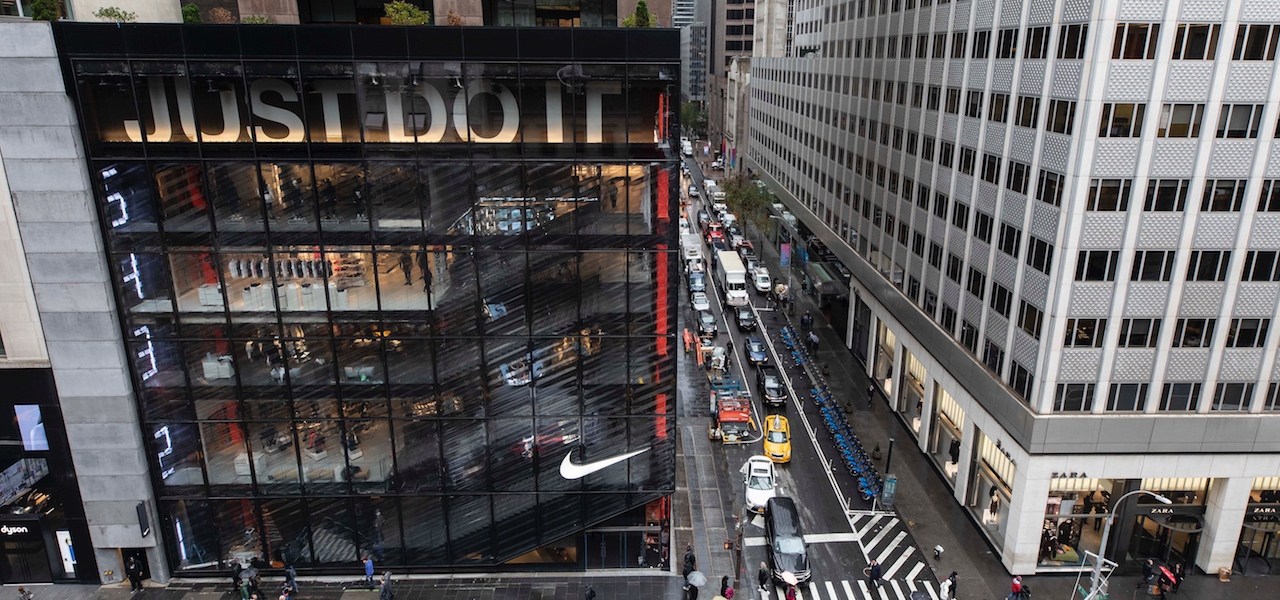In effort to grow direct sales, Nike integrated its app strategy into its stores

If you’re a Nike+ member, entering a Nike store with the Nike app unlocks a new experience. With the app in in-store mode, customers can request fitting rooms and shoe sizes instantly, receive special offers and exclusive product, and checkout in the app and leave by skipping the line.
Nike has woven its mobile app into its retail stores, and now, having realized the power of its mobile apps to drive customer loyalty and sales, it’s tightening the relationship between the two channels. The secret sauce behind Nike’s success in building up its digital and direct-to-consumer businesses is the link between its apps and its store strategy.
“The way we look at digital and in-store is not channel-by-channel, or one channel helping the other. Instead, we architected the entire notion of why someone with a phone in their pocket would walk into a store,” said Michael Martin, Nike’s global head of digital products. “We want to have the best store experience where our most connected customers are, whereas another company might look at the inverse — if people are shopping in the app, they don’t need a store there. But we see our approach as better serving our customers.”
Martin oversees Nike’s apps — which include the main Nike app, the SNKRS app, Nike Run Club, as well as Nike’s WeChat store — as well as digital retail experiences and services. His role expanded a year and a half ago to include leading digital integration in Nike’s stores, at the same time the company was putting together an internal strategy to increase direct sales. In 2017, Nike announced its “Triple Double Strategy” focusing on doubling the innovation, speed to market and direct customer connections at Nike through a series of initiatives.
To double direct connections, Nike rethought the way its apps functioned in Nike stores, including rewarding Nike+ app members with in-store perks and exclusive features, in an effort to drive direct sales.
Over the past year, Nike has built a feedback loop of customer data that flows from its collection of apps into its stores. It’s mostly in Nike’s new store concepts: House of Innovation, now open in New York and Shanghai, and Nike Live, which opened last year in Los Angeles. These stores include new digital features like app-reserve for sneakers, mobile checkout and buy online, pick up in-store lockers. Martin said that by approaching the two channels — app and store — as connected customer touchpoints, sales have increased.
The impact is felt throughout the store experience. Store merchandising strategies are informed by the data coming from users in that area that use the app to predict what will sell well, and in stores, customers can check on size and style availability and checkout in the app to make it a more frictionless experience.
Ad position: web_incontent_pos1
Nike’s using its internal channel strategy to eliminate the silos between digital and retail sales channels, banking on the idea that success in one channel should drive success in other channels, too. As a result, it’s writing the rules on how a legacy retail brand can drive direct sales and customer connections: By offering customers a reason to opt-in to membership programs and app downloads by improving all other retail channels in return.
“Nike’s shown that a massive brand can navigate a new retail landscape that prioritizes direct sales and customer connections,” said Robin Copland, group vp of retail practice at Huge.
Nike’s digital and direct sales are up. Last Thursday, the company announced its results for its third financial quarter for 2019. Total revenue was up 7 percent to $9.6 billion, while digital sales were up 36 percent, making it Nike Digital’s first billion-dollar quarter. Direct sales grew by Nike CEO Mark Parker stressed the investment Nike is making in signing up more Nike+ loyalty members and app users, who spend more in Nike stores: At the new House of Innovation stores, Nike has found that more than 50 percent of transactions come from Nike members, and that customers who use the Nike app average 40 percent higher sales across all of Nike’s retail stores than those who don’t use the app, Parker said.
Martin said that driving app users to shop in Nike stores was made possible because of his team’s integration, which bridged the gap between digital products and the store concepts.
“The shift was a key early, but a critical part of the strategy shift to focus on one-to-one relationships with consumers at scale,” said Martin. “It’s given us greater license because we’re immersed in all this data that leads to decisions that come back to the consumer, because it’s a rapid cycle. I’m also responsible for the digital innovation team, which isn’t a lab off to the side. We’re pushing the boundaries of innovation into the core of the company as a whole.”
Ad position: web_incontent_pos2
It’s a strategy that also extends out to Nike’s retail partners. Martin said the team is testing digital features powered by the Nike app with Foot Locker and Dick’s Sporting Goods.
“We’re designing our own stores in the same way you would a digital experience, and we can build a better experience that serves the customers more,” he said. “Then, we can take what we know and bring it to our retail partners. The goal is no weak links.”
—
Sign up for the Modern Retail Briefing to get retail news, analysis and insight delivered to your inbox every morning.

